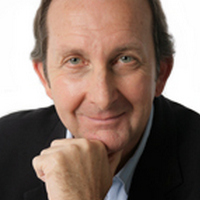

One of Australia’s most respected economists has argued the case that the RBA should cut interest rates today. There’s only one problem — Ross Garnaut is historically linked to the Australian Labor Party.
Of course, that doesn’t make him wrong, but we have to recognise that the Albanese Government is in political trouble, with the Coalition now ahead on a two-party preferred basis in the latest poll.
This from 9News.com.au sums up the pressure Prime Minister Anthony Albanese is under: “Support for the Albanese government has slumped to a new low of 27 per cent amid the political row over cost of living pressures, according to a new poll.
“In a blow for Labor, the latest Resolve Political Monitor survey, conducted for The Sydney Morning Herald, shows 56 per cent of voters have rejected the government's assurances about the economy.
The research released today also reveals that 59 per cent of voters think they are worse off than when Labor came to power at the last election in May 2022. Just 13 per cent say they feel better off.”
There are many issues voters might have with the Government but the cost of living and rate cuts not happening look like the killer blows for the PM. He needs rate cuts ASAP and last week’s weak economic growth reading of 0.3% for the September quarter and 0.8% for the year increased prospects for an earlier rate cut than May.
When AMP’s chief economist saw these numbers last week, this is what he said: “We see a high chance of a February cut (around 50%) and it’s quite likely that RBA commentary in the week ahead becomes a bit more dovish to allow for that possibility.”
He wasn’t quite as concerned as Ross Garnaut, but he saw the good reasons why February was a chance for our first rate cut.
Given the scene I have set, let’s see why Garnaut thinks a cut today should be considered by the Reserve Bank board.
I will make his eco-speak more understandable for non-economists and I’ll put the RBA’s ‘likely’ view on his arguments in red. Here goes:
While Garnaut makes some good arguments, as you can see, the RBA board can easily disagree with his position. Economics isn’t a precise science. We’re always guessing how consumers, price-setting businesses and other key players (like investors and governments), as well as foreign businesses are going to behave. And then there’s a future US President who wants to use tariffs that could push up world inflation rates.
Garnaut’s best argument is one that says the RBA has made mistakes in the past. In his new book, Let’s Tax Carbon: and Other Ideas for a Better Australia, he cites the work he did in two chapters with economist David Vines from Oxford University.
To quote them: “Vines and I show that missteps in monetary policy also played a large role in the seven years of underperformance before COVID-19. After 2013, the RBA kept interest rates higher than other developed countries, even though Australia’s economy was weaker. Unemployment stuck at over 5 per cent and underemployment soared. Record rates of unskilled migration put downward pressure on wages. Inflation was mostly below the target band.”
In 2013, when I was hosting the Sky Business program called Switzer, I regularly criticized the RBA for keeping rates too high. Dr John Hewson would often come on the show and rip into the RBA. We were both proved right.
I don’t want to bag the RBA about their rates stance, but they should be close to a rate cut. If they say no today (as I expect) and if the economic data continues to weaken, they should cut in February.
The compelling story for why the RBA should cut is the fact that they’ve been wrong many times and have cut too far and raised too far. And they’ve made these mistakes for too long!